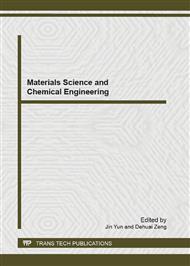[1]
M.C. Gentz, G. Murdoch, G.F. King: Tandem use of selective insecticides and natural enemies for effective, reduced-risk pest management. J. Biological Control. 208-215 (2010), p.52
DOI: 10.1016/j.biocontrol.2009.07.012
Google Scholar
[2]
P. Orpin: Potential avermectin resistance in a cattle herd. J. BVA. Vet. Record. 69-70 (2010), p.167
DOI: 10.1136/vr.c3628
Google Scholar
[3]
W.L. Shoop, H. Mrozik, M.H. Fisher: Structure and activity of avermectins and milbemycins in animal health. J. Vet. Parasitol. 139-156 (1995), p.59
DOI: 10.1016/0304-4017(94)00743-v
Google Scholar
[4]
X.P. Feng, H. Jon, N.B. Robin: Study of the nematode putative GABA type-A receptor subunits: evidence for modulation by ivermectin. J. Neurochem. 870-878 (2002), p.83
DOI: 10.1046/j.1471-4159.2002.01199.x
Google Scholar
[5]
N.D. Tribble, J.F. Burka, F.S. B. Kibenge: Identification of the genes encoding for putative gamma aminobutyric acid (GABA) and glutamate-gated chloride channel (GluCl) alpha receptor subunits in sea lice (Lepeophtheirus salmonis). J. vet. Pharmacol. Therap. 163-167 (2007), p.30
DOI: 10.1111/j.1365-2885.2007.00823.x
Google Scholar
[6]
J. Gao, Z.J. Li: Conserved network properties of helical membrane protein structures and its implication for improving membrane protein homology modelling at the twilight zone. J. Comput. Aided Mol. Des. 755-763 (2009), p.23
DOI: 10.1007/s10822-008-9220-9
Google Scholar
[7]
N. Orr, A.J. Shaffner, K.R. Crouse: Novel mode of action of spinosad: Receptor binding studies demonstrating lack of interaction with known insecticidal target sites. J. Pestic. Biochem. Physiol. 1-5 (2009), p.95
DOI: 10.1016/j.pestbp.2009.04.009
Google Scholar
[8]
A.J. Wolstenholme: Recent progress in understanding the interaction between avermectins and ligand-gated ion channels: putting the pests to sleep. J. Inverteb. Neurosci. 5-10 (2010), p.10
DOI: 10.1007/s10158-010-0105-y
Google Scholar
[9]
R.J. Law, F.C. Lightstone: Modeling Neuronal Nicotinic and GABA Receptors: Important Interface Salt-Links and Protein Dynamics. J. Biophys. 1586–1594 (2009), p.97
DOI: 10.1016/j.bpj.2009.06.044
Google Scholar
[10]
R.J. Law, F.C. Lightstone: Modeling Neuronal Nicotinic and GABA Receptors: Important Interface Salt-Links and Protein Dynamics. J. Biophys. 1586–1594 (2009), p.97
DOI: 10.1016/j.bpj.2009.06.044
Google Scholar
[11]
A. Oda, N. Yamaotsu, S. Hirono: Evaluation of the searching abilities of HBOP and HBSITE for binding pocket detection. J. Comput. Chem. 2728–2737 (2009), p.30
DOI: 10.1002/jcc.21299
Google Scholar
[12]
Y.L. Deng, J.E. Casida: House fly head GABA-gated chloride channel: toxicologically relevant binding site for avermectins coupled to site for ethynylbicycloorthobenzoate. J. Pestic. Biochem. Physiol. 116-122 (1992), p.43
DOI: 10.1016/0048-3575(92)90025-u
Google Scholar


